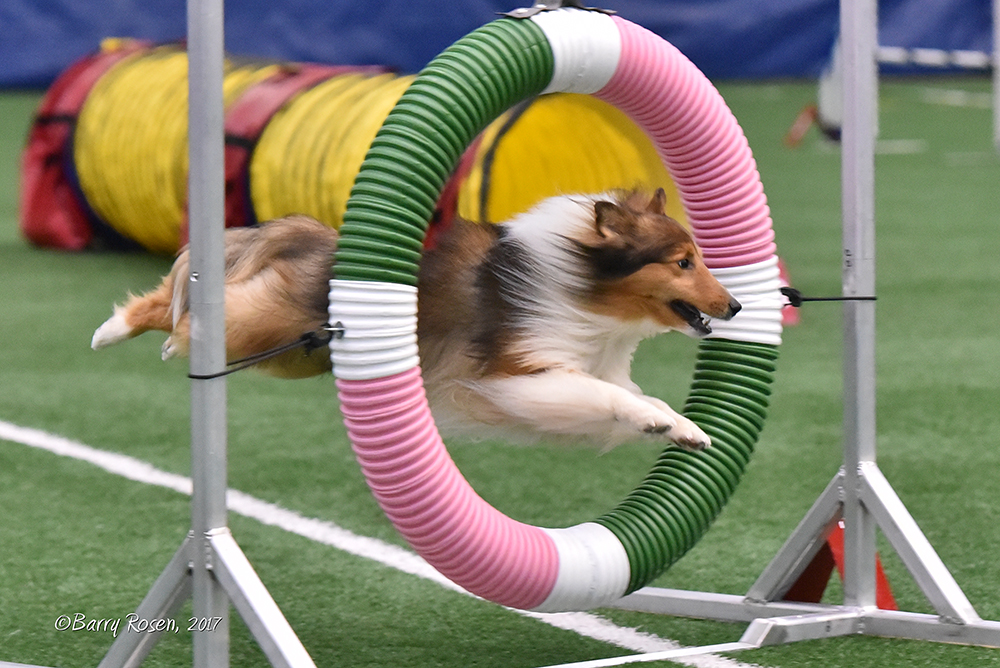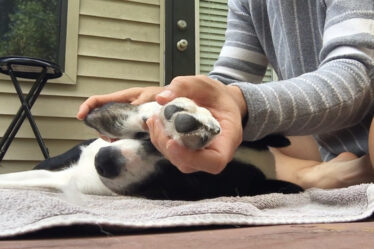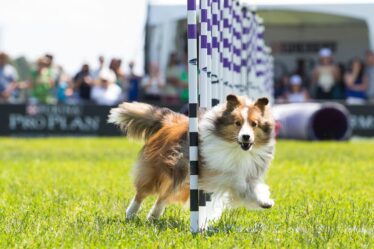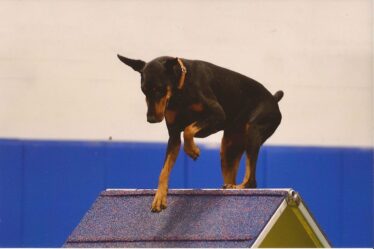
It’s not training quantity that produces success.
It is training quality.
The question for us as trainers becomes, how do we create quality in our training sessions?
We often get tricked into thinking that lots of practice hours are productive and will automatically produce results. After all, we’ve heard that practicing a skill for 10,000 hours is the pathway to mastery. Well, while skill repetition is an important part of dog training, once a team reaches a certain level of competency, repetition no longer yields the same value.
On its own, repetition of what we already know will not lead to the improvement of a skill. The quality of practice becomes a critical component to forward progress. As we strive to achieve bigger and better goals, we need to increase the amount of intention we put into our training.
After years of trial and error, we have a four-step process to help us create a purposeful practice session every time. Each session includes a purpose, a challenge, boundaries, and a review of what was accomplished.
1. Identify a Purpose
Before a training session begins, we identify what should be trained. Without a purpose, the session may just be training. Determining your topic or what for a training session is the first key element in training for quality.
Be specific. You can make it simple – write down a weak obstacle skill that you want to improve. If you’re running a practice course, are you running to push for speed, to test a new handling move or to run clean? Another example of purpose might be to improve the accuracy of your dog’s weave entry when coming from a tunnel.
2. Create the Challenge
Once we have established what skill we are going to train, we create a short training set. The training session must focus on the skill and must contain a challenge.
A challenge is a different or new situation that causes struggle or failure. This can be as simple as aiming to complete the skill with accuracy and speed. Failure and imperfection are good signs in a practice session! They indicate that we are pushing the skill to become stronger and more diverse.
A challenge can be almost anything; such as adding distance, speed, a new layout of equipment, a new location, or any number of changing variables around the equipment.
In our weave entry example, we might alter the distance from tunnel to weaves or we might alter the shape of the tunnel from a ‘C’ to straight to get more speed.
3. Set Boundaries
Keeping the focus on a specific purpose or skill throughout a training session is the whole point of quality training. It requires us to set boundaries around what to reward and what criteria to maintain.
Before entering a training session, identify what behaviors you are looking to reinforce; what will you be rewarding and how? Are you using a mark/clicker? Are you using treats or a well placed toy? A few minutes of detailed thinking improves quality!
In our weave entry example, we would reward the first pole with a clicker mark. The focus is solely on the weave entry, which eliminates training other behaviors such the send to the tunnel or a sit stay.
When training our dogs, we often encounter a “pick your battles” situation. This happens when the dog presents an undesirable behavior while completing the skill you are training.
In the weave example, the dog may break the stay or pop the last pole. Now what? It’s easy to begin training multiple skills, the stay, the weave entry and 12 pole commitment within one training session. This creates an unproductive, frustrating training session for you and your teammate.
With a known purpose and boundaries, we would reward the weave entry and eliminate or reduce other issues. A restrained send eliminates the need for a wait. Using 6 poles instead of 12 eliminates the popping at 10. Those skills can go on the list to be deliberately addressed in their own training sessions.
4. Review
After the training session has ended, we take time to review the purpose, the challenge and boundaries that were set prior to the session.
We use this check-in to decide what to practice next!
Interested in seeing this process in action?
Keep an eye on the Agility and Beyond Facebook next Tuesday (2/18) to join Kat for a training session with her up-and-coming super star, Flash!
Want to stay connected?
We work every day to expand our minds, enhance our bodies and improve our teamwork. Our Weekly Walk-Through provides you with an insider’s perspective of how we continually better ourselves.



